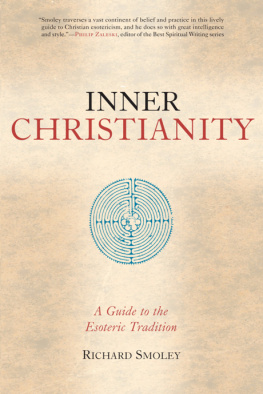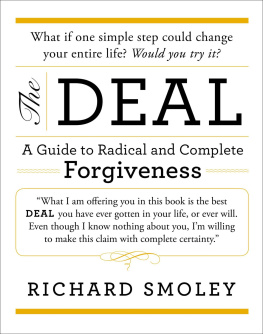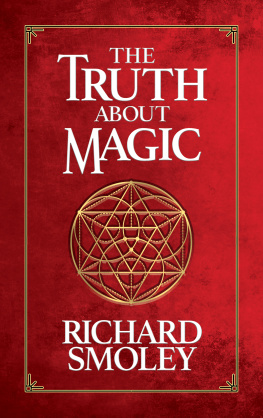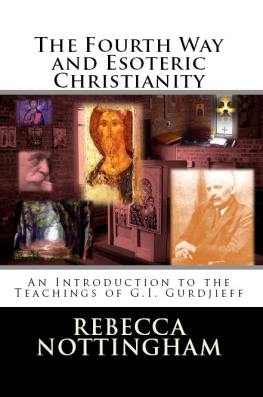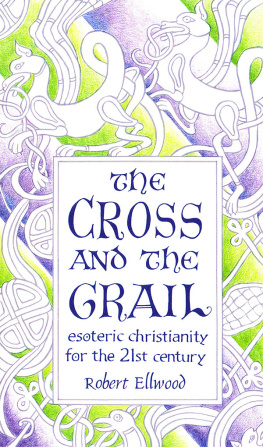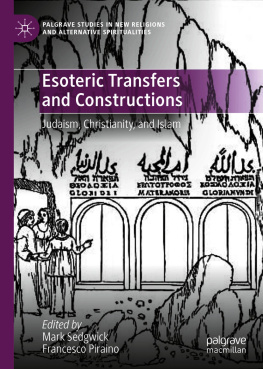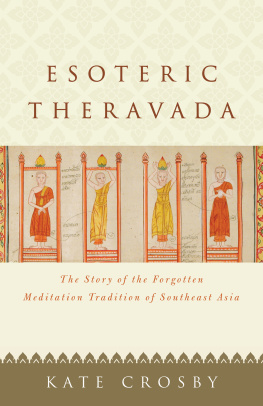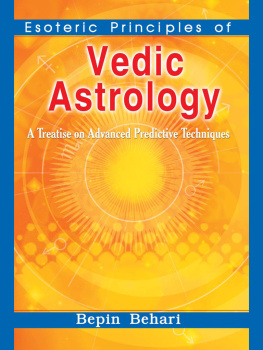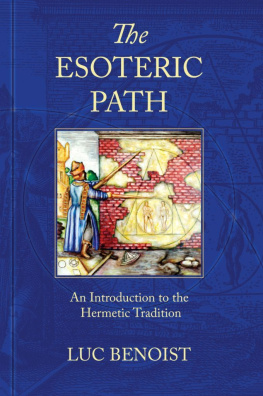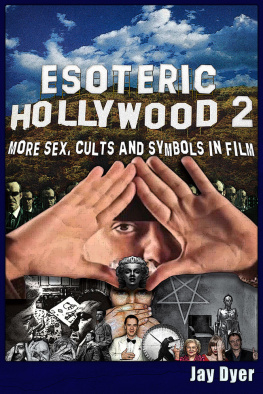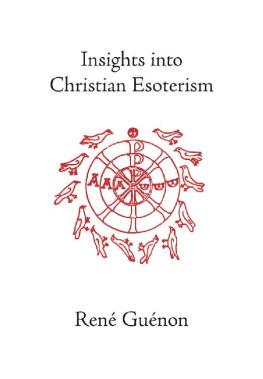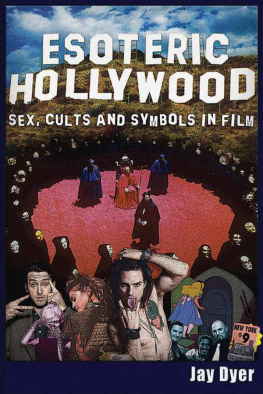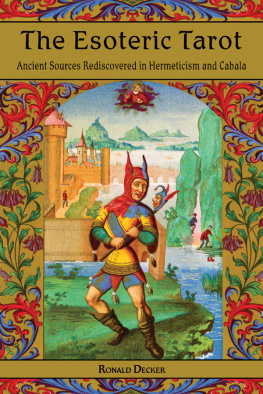INNER CHRISTIANITY
A Guide to the Esoteric Tradition

Richard Smoley

SHAMBHALA
Boston & London
2012
Shambhala Publications, Inc.
Horticultural Hall
300 Massachusetts Avenue
Boston, MA 02115
www.shambhala.com
2002 by Richard Smoley
Cover design: Jonathan Sainsbury
All rights reserved. No part of this book may be reproduced in any form or by any means, electronic or mechanical, including photocopying, recording, or by any information storage and retrieval system, without permission in writing from the publisher.
Grateful acknowledgment is made to the following:
Lindisfarne Books, for permission to quote excerpts from Daniel Andreev, The Rose of the World, translated by Jordan Roberts. Translation copyright 1990, 1997 Daniel Andreev Charity Foundation. Praxis Institute Press, for permission to quote excerpts from Gnosis: Study and Commentaries on the Esoteric Tradition of Eastern Orthodoxy by Boris Mouravieff, translated by S. E. Wissa and Maneck dOncieu, edited by Robin Amis. Red Wheel/Weiser Inc., for permission to quote excerpts from St. John of the Cross: Alchemist of the Soul, edited and translated by Antonio T. de Nicols, published by Samuel Weiser Inc., 1996; and from Sefer Yetzirah: The Book of Creation in Theory and Practice, by Aryeh Kaplan, published by Samuel Weiser Inc., 1990. Robert Powell, for permission to reprint excerpts from Meditations on the Tarot, published by Amity House, 1985; reprinted by Jeremy P. Tarcher, 2002. Translation copyright 1985, 2002 by Robert A. Powell. Portions from A Course in Miracles copyright 1975, 1992, 1996 used by permission of the Foundation for A Course in Miracles, Inc., 41397 Buecking Drive, Temecula, CA 92590. All rights reserved. A Course in Miracles is a registered trademark of the Foundation for A Course in Miracles. Image from Thomas Bromley, Der Weg zum Sabbath der Ruhe (1778) reproduced courtesy of Bibliotheca Philosophica Hermetica, Amsterdam. Image of Russian icon crucifix courtesy of St. Isaac of Syria Skete, Boscobel, Wisconsin, www.skete.com.
Library of Congress Cataloging-in-Publication Data
Smoley, Richard, 1956
Inner Christianity: a guide to the esoteric tradition / by Richard Smoley.
p. cm.
Includes bibliographical references and index.
eISBN 978-0-8348-2440-9
ISBN 978-1-57062-810-8 (pbk.)
1. Mysticism. 2. Theosophy. I. Title.
BV5083 .S66 2002
248DC21
2002004717
What you are looking for is what is looking.
FRANCIS OF ASSISI
CONTENTS
O F THE MANY PEOPLE to whom thanks are due for this book, the foremost by far are Katie Boyle, my agent, who was a great help and support to me in developing this project, and Joel Segel, my editor at Shambhala, whose investment of a tremendous amount of insight, dedication, and hard work made this a far better book than it could otherwise have been.
Of the countless others who have given me invaluable advice and guidance about this project, I would particularly like to thank Robin Amis, Christopher Bamford, the Reverend Cynthia Bourgeault, John Carey, Glyn Davies, Alice O. Howell, Warren Kenton, Jay Kinney, Jacob Needleman, the Reverend Laris A. Salins, Vlad Shilinis, John Shirley, and Arthur Versluis. I owe them all a great deal. And finally, my warmest gratitude to Megan, whose love and affection gave me much comfort throughout the writing of this book.
Sandisfield, Massachusetts
December 2001
I F ONE SINGLE THEME HAS DOMINATED the history of the past century, it is loss of faith. The implacable course of events has cast doubt upon progress, civilization, political and economic systems, even the essential decency of human nature. Christianity has not been spared. Starting in the nineteenth century, science began to show that the earth had been born not six thousand years in the past, as the Bible seemed to suggest, but billions of years ago. Even the Gospels themselves no longer seemed like Gospel truth, as historical and critical methods revealed that much in the life of Christ was not historical fact but myths and legends that attached themselves to him after his time.
These developments have drawn forth a complex array of reactions from clergy and laity alike. Some have actively rejected this knowledge, taking refuge in traditionalism and fundamentalism. Others have tried to integrate the new perspectives into their religious life, only to be left with a vague and unsatisfying liberal faith. Still others are disaffected from religion in general or simply bewildered.
Whatever course we choose, one thing becomes obvious: it is now next to impossible to take faith unreflectively. We no longer live in a conceptual world framed by the comforting certainties of church doctrine and the literal truth of the Bible. And yet, as disorienting and disillusioning as the process of modern inquiry has been, it has not destroyed the religious search but has invigorated it. Rather than contenting themselves with secondhand truths, people have begun to ask how they themselves can know the presence of the divine.
This impulse has fed the explosion of New Age religions, alternative spiritualities, and traditions brought over from the East that we have seen in recent decades. Many of these religions, both new and newly imported, stress enlightenment as a goal. They say that our ordinary state of consciousness is not the highest one of which we are capable, but a lowgrade, delusory state. Spiritual disciplines such as meditation can free us from this oblivion and restore us to our full birthright as human beings.
On a parallel course, the perennial interest in Christian origins has led scholars to reexamine many ancient texts and to unearth new ones: the Dead Sea Scrolls and the Nag Hammadi Library are the most famous examples. Some of these works suggest that early Christians not only reached insights similar to those of the Eastern religions but also had a sophisticated understanding of human consciousness in their own right. Many were concerned with what they called gnosis, a word that means knowledge in Greek. This is knowledge of a very specific kinddirect, intuitive knowing that surpasses ordinary reason and confers spiritual liberation. Gnosis strongly resembles enlightenment as portrayed in Hinduism and Buddhism.
Although interest in these ancient teachings is considerable, many people assume the teachings were lost long ago, the victims of official suppression and popular neglect. But in fact careful investigation shows that these truths have always been kept alive in the Christian tradition and indeed have fed the life of Western civilization like a great underground stream that only rarely rises to the surface. There have always been teachers and groups that have managed to reach these states of higher consciousness and have passed their knowledge on to the present.
Knowledge that liberates consciousness is often described as esoteric. The word esoteric is somewhat forbidding, usually connoting something obscure, exotic, and irrelevant to daily lifein short, something far out. But etymologically the word means exactly the opposite: it comes from the Greek esotero, which means further in. You have to go further in yourself to understand what this knowledge is about. In this book I will use the terms inner Christianity and esoteric Christianity interchangeably.
Esotericism teaches that this world within us is as rich and diverse as the outer world and consists of many different levels of being. Furthermore, these levels exist in a more or less objective way: those familiar with them can discuss them intelligibly with each other and will find that their experiences are essentially similar, much as everyone will say a ball is round. Although these levels stand between us and God, they do so not as obstacles but as way stations. Christ said, In my Fathers house are many mansions (John 14:2). The Greek word here translated as mansions literally means way stations.
Next page
